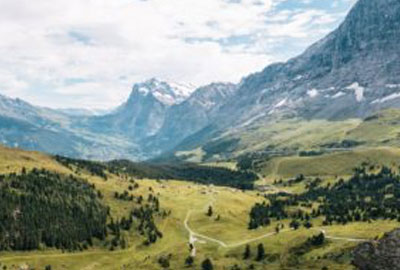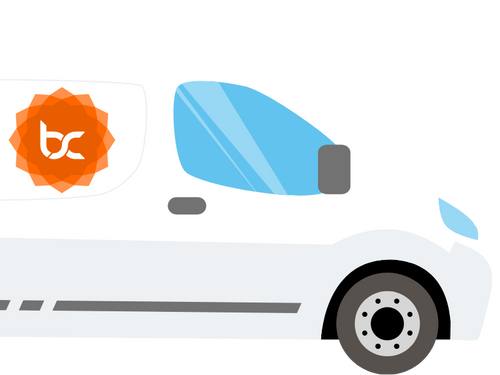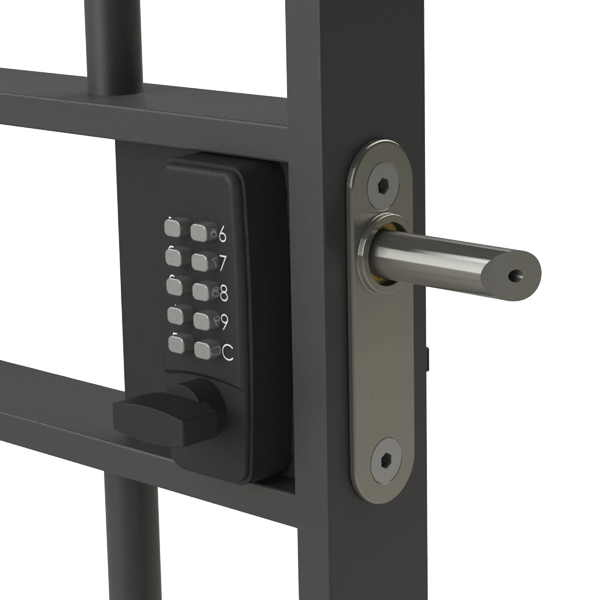Bikepacking has really taken off in the UK over the last year or so, but it’s been around for a long time. Some people will say bikepacking is an off-road trip on a mountain bike, taken over multiple days, while others use the term to refer to any multi-day trip where a bike is your main means of transportation. Either way, you carry everything you need with you.
Bikepacking appeals to both serious and casual riders. It’s not competitive in the same way racing is, and it can be as intense or as leisurely as you like. You ride at your own pace and choose your route.
Traditionally, the idea is you’re self-sufficient and camp each night, pitching your tent at a campsite or wherever wild camping is permitted. But other riders may prefer to stop at hostels, B&Bs, or hotels.
Whatever you decide to do, it’s the sense of freedom you’ll enjoy the most. You’re not limited by taxi fares, public transport timetables, or queues of tourists. It’s an excellent way to see new places and appreciate landscapes and nature.

WHAT BIKE SHOULD I BRING?
It depends on the kind of route you plan to take. A mountain bike is best for bumpy trails and more demanding routes, while a road bike is better suited to smoother surfaces.
You need to look for the following when choosing your bike:
- A heavier frame that can handle the combined weight of you and your luggage
- A comfortable saddle, since you’ll be riding for long periods of time
- Higher bottom brackets
- Large, wide tyres
- Disc brakes
- Mud clearance
All of these features are more suited to off-road riding. A mountain bike is the safest option if you’ll be taking different types of routes, in case you deal with any challenging terrain.

BIKEPACKING KIT LIST
It’s best to keep your load as lightweight as possible, since you’ll be carrying everything on your bike. Luggage feels a lot heavier after a long day of cycling, so bear that in mind when you’re packing.
You’ll need:
Bag(s) to hold everything
Lightweight frame bags are the best option for bikepackers, because you can store them in the triangle below the top tube without affecting the width and weight distribution of your bike. Look for a durable bag that’s easy to attach to your bike securely.
You might also like a handlebar bag, which keeps your essentials within easy reach.
A tent or bivouac shelter
If you’re not sleeping in hostels or hotels, you’ll need your own accommodation. A small, pop-up tent is good to have if you’re expecting bad weather, but if you’re heading somewhere warm and you want to add to the sense of adventure by sleeping outside, a bivouac shelter, more commonly known as a bivvy bag, is also a good option – and it weighs less.
A bivvy bag is a thin, waterproof bag you put over your sleeping bag. You pull it over your head, leaving a gap so you can breathe, and sleep outside. The best ones are breathable and minimise the amount of condensation. You can buy an army bivvy bag for around £40.

A sleeping bag
Your choice of sleeping bag will have a significant impact on how much you enjoy your trip. If you don’t sleep well you might be too tired to appreciate the nature around you, and you’re also more likely to make mistakes when cycling.
Choose a sleeping bag that will keep you warm without overheating you. Square-shaped bags give you more room to move around, while mummy-shaped bags are tapered at the end and keep heat close to your body.
Once again, weight is important, since you don’t want to carry too much. However, it’s worth carrying something slightly heavier if your chosen sleeping bag offers the right amount of insulation and protection from the elements.
Features to look for:
- Breathable
- Rain and water resistant
- Insulated
- Easy to pack away and carry on your bike
The amount of weather resistance you’ll need depends on the climate in your destination.
Clothing
The type of clothes you pack will depend on the weather you’re expecting, but every bikepacker has the same aims:
- Stay cool when it’s hot
- Keep warm when it’s cold
- Stay dry when it rains
- Be comfortable at all times
You’ll be spending most of your time cycling, so bring riding kit that fits well and you feel good in. Shorts, a short-sleeved base layer and a cap will be enough when it’s hot, but pack a long-sleeved zip-up top for cooler days (a good quality one should keep you warm even when it’s wet).
You’ll need a few more items if you’re expecting rain. A waterproof with a hood is essential, and you may also like to bring trousers, waterproof gloves, arm and knee warmers, and waterproof shoe covers.
Consider what you’ll wear at night, too, especially if the temperature is known to drop. Having a set of dry clothes to change into after a long day of cycling will do wonders for your mood, and they can also double up as pyjamas. Base layers like merino trousers, a long-sleeved top or T-shirt, thermal socks and a thermal hat all work well, although you might need additional layers if you’re bringing a bivvy bag instead of a tent. Add a jacket to throw over the top in the evening and use as a pillow at night.

Shoes
The right cycling shoes will depend on your own preferences, but make sure you have comfortable footwear. They hold your foot in the best position on the bike, which reduces the chance of injury.
According to Road Cycling UK, you need to look for:
- The fit. They should be snug – not too tight and not too loose.
- The closure system. Choices include velcro, dials, laces and ratchet buckles. What you pick will depend on your budget and what you find most comfortable.
- The material used to make the sole – normally carbon fibre or nylon. Carbon soles are stiffer, while nylon soles are more flexible but also tend to weigh more.
- The cleat style. Two-bolt cleat mounts are found on mountain bike, commuting or touring shoes, while three-bolt cleat mounts are more common for road cycling shoes.
Navigation and tools
Planning is key here. Decide on your route ahead of time and then upload it to whatever device you’re using to navigate, rather than asking your GPS to guide you once you get there. You can buy a GPS bike computer, or you can use your phone. Some bikepackers prefer the simplicity of a paper map.
Regular bike maintenance lowers the chances of you having any severe problems. Even so, it’s worth keeping a small kit with tyre repair equipment, spare bolts, duct tape, zip ties, a small amount of chain oil, and a Swiss Army bike tool.

WHERE YOU COULD GO
Bikepacking in the UK
The beautiful, natural landscapes in the UK make it an ideal place to try bikepacking. There are routes all over the country, from the Cambrian Mountains in Wales to the Scottish Highlands and South England.
Here are some suggestions:
THE SOUTH DOWNS WAY
This picturesque route is an ideal introduction to bikepacking. That doesn’t mean it’s easy – you’ll tackle 3810m of ascent and several different types of terrain, including, chalk, flint and gravel – but the 100-mile route is signposted clearly and you can take as much (or as little) time as you need.
THE TRANS-CAMBRIAN WAY
This route takes you right across Wales, from the English border on one side to Dovey Junction on the other. There aren’t many people around this area of the country, so it’s perfect if you prefer to cycle in peace, although you’ll need to pay attention at all times to deal with rivers, forests, and ridge roads.
THE HIGHLAND TRAIL
The Highland Trail is one of the biggest challenges for bikepackers in Britain. It’s a remote route with dirt roads and single tracks, and some of the terrain is so steep that you need to carry your bike on your back (known as hike-a-bike). But you’re rewarded with clear views of the Scottish Highlands and plenty of food stops along the way.

Bikepacking abroad
Going abroad opens up a lot of possibilities for your trip. It also requires extra planning, especially if you’d like to travel through more than one country (across Europe, for example). You’ll need to bring your passport and might need to apply for a visa, or visas, before you arrive.
Examples of good routes include:
THE TORINO-NICE RALLY ROUTE, ITALY AND FRANCE
This is an organised event, but you don’t have to follow a fixed route. You’re able to make the journey as easy or as difficult as you’d like, which is why the Torino-Nice Rally appeals to bikepackers of all experience levels. You start in Turin, ride across the Alps, and finish in southern France, where bikepacking is especially popular thanks to the number of coastal roads and well-marked trails.
THE GREAT ALLEGHENY PASSAGE AND THE C&O TOWPATH
You can combine these two routes if you’re a beginner cyclist and feel ready for your first long bikepacking trip. The Great Allegheny Passage is a gravel road that starts in Pittsburgh, Pennsylvania, before meeting the C&O Canal Towpath in Cumberland, Maryland and continuing on to Washington DC. There are lots of places to stop along the way, so you can stretch out your trip for as long as you like.

A FEW GUIDELINES
If you’re bikepacking in the UK, remember wild camping is only legal in Scotland. If you’re in England, Wales or Northern Ireland, you’ll need to ask permission from the owner if you want to stay on their land. Always leave your campsite the way you found it – or in an even better condition. Respect the environment and set a good example for your fellow bikepackers.
When you’re planning your trip, do what you think will be the most comfortable thing for you. Some people prefer the time and space to figure things out on their own, while others are more reassured if other people are around. You could travel by yourself, with a friend or two, or as part of a group at an organised event.
Fitness before your trip
You’ll most likely be cycling on a regular basis at home. Even so, it’s not a good idea to go on a bikepacking trip without training first. Vary your routes and build up the length of time you cycle to improve your endurance and prepare your body for multiple days of riding over different types of terrain.
It also helps to gradually add more weight to your bike when you ride, so carrying luggage with you isn’t a shock on the first day of your bikepacking trip. If you like to train in the gym, focus on leg strength to help with the climbs.

THE ENVIRONMENTAL BENEFITS OF BIKEPACKING OVER REGULAR TRAVEL
Bikepacking has a minimal impact on the environment – if you stick to some key principles:
- Research your route before you go and find out if there are any restrictions or concerns.
- Stay on the trails and treat them with respect.
- Don’t camp on vegetation.
- Leave plants, birds and wildlife alone.
- Clean up your rubbish and take it with you. Leave every place exactly as you found it.
- Try not to use fire if you don’t have to. A small stove is good for cooking, and a torch is a much safer way of seeing in the dark.

SAFETY WHILE CYCLING
You’ll need to change the way you cycle to suit the weather conditions.
Cycling when it’s windy
- Try and take a route where there are natural windbreaks, such as hedges.
- Bend close to the handlebars to lower the resistance of your body against the wind and hold on tightly.
Cycling when it’s rainy
- Pay extra attention to stopping distances. It’ll take longer than normal for your bike to come to a halt and road surfaces will be slippery.
- Avoid any bumps, drains and markings on the road that will be slippery too. Slow down if it’s not safe for you to cycle around them and don’t make any sudden moves.
Cycling when it’s icy
- Keep your eyes on the road ahead so you can watch out for icy patches and cycle past them.
- If it’s not safe for you to avoid icy patches, slow right down, don’t lean into the bike, and don’t make any sudden moves.
Always stop if the weather conditions become too challenging. You can read more road safety tips for cyclists on our blog.

Personal safety tips
Make two copies of important documents before you leave (your travel insurance policy and your passport, if you’re abroad). Keep them in two different places in case you lose one.
Keep valuables like your wallet and phone in your bar bag and never let it out of your sight. It’s likely your bike is pretty valuable too, so don’t leave that unattended either.
Don’t carry lots of cash with you if you’re in the UK. Credit cards are better protected than debit cards when it comes to crimes like fraud and theft.
If you’re abroad, cash can be better than card (to avoid international transaction fees). Store your cash in several different places so you’re not completely out of money if anything gets stolen.
Make sure your bike has a white light at the front, a blinking red light at the rear, and reflective patches on the pedals. Wear high-vis clothing when it’s dark or foggy, and don’t wear headphones, especially when you’re cycling through busy areas. Always wear a helmet.
On busier roads, make sure you ride confidently (in the cycle lane or hard shoulder where possible) and make it clear to the traffic behind you that you’re there. They should be able to see you from a good distance away. You might feel safer if you have a rear view mirror, so you can see who’s behind you without turning round.
Bikepacking may take a lot of preparation, but it’s certainly worth it. The freedom of being self-sufficient is addictive, and it’s a fun, eco-friendly way to stay fit and see the world.





